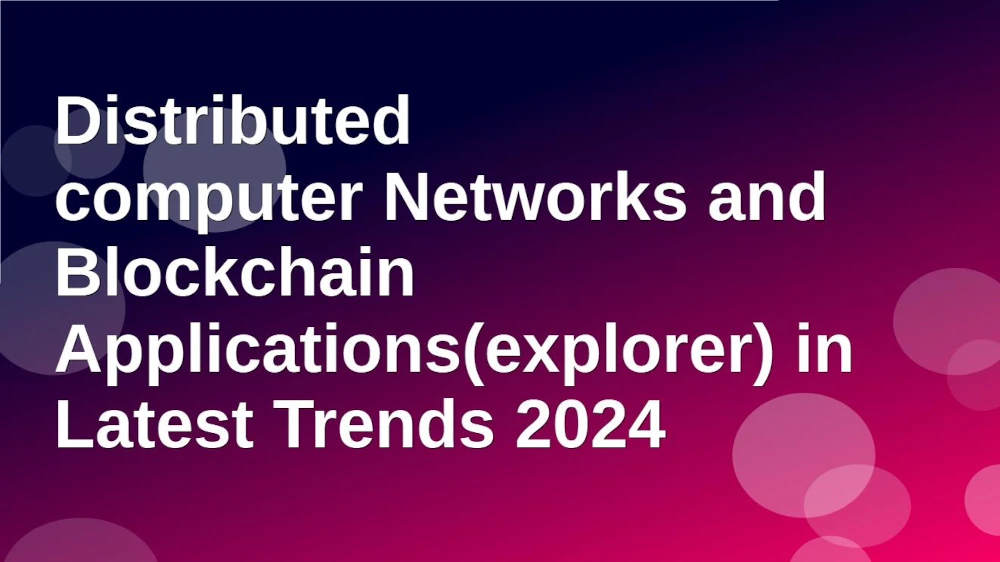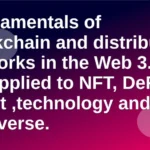Distributed computer Networks and Blockchain Applications(explorer) in Latest Trends 2024
2024年11月20日

Applications of Distributed Networks
Distributed networks are systems in which each node (computer or device) communicates directly with each other and shares data and resources, without relying on a central server. This structure improves fault tolerance and transparency, and is being applied in a variety of fields.
Below are some specific examples.
File Sharing
BitTorrent is a file sharing protocol that uses a distributed network. It divides files into small parts and shares them between multiple users, allowing files to be distributed efficiently and quickly.
Main features:
- Distributed file sharing: By sharing files directly between users without relying on a central server, efficient data transfer is achieved.
- High-speed downloads: By dividing files into multiple parts and downloading them simultaneously from multiple users, speed is improved.
- Efficient use of bandwidth: Users who are downloading can also upload to other users, so the bandwidth of the entire network can be used effectively.
Cloud storage
- IPFS (InterPlanetary File System) is a decentralised file system that stores data on multiple nodes. This improves data fault tolerance and access speed.
Specific examples of cloud storage
- Filecoin: Filecoin is a decentralised storage network based on IPFS. Users can earn rewards by providing excess storage, and data is stored and retrieved in a decentralised manner.
- Storj: Storj is a decentralised cloud storage platform that encrypts and stores data in a decentralised manner. This enhances data privacy and security.
Decentralised Applications (dApps)
Applications that use decentralised networks operate without relying on a central server. For example, Uniswap is a decentralised exchange (DEX) that allows users to exchange cryptocurrencies without going through a central administrator.
Main features of dApps:
- No central administrator: Unlike traditional applications, which are managed and operated by companies and organisations, dApps operate on blockchains and do not have a specific administrator.
- Open source: The source code for many dApps is publicly available, so anyone can check and improve it.
- Token utilisation: They have their own cryptocurrency (tokens), which users can use to receive services or earn rewards.
- Smart contract utilisation: This is a system that automatically executes contracts when conditions are met, enabling highly reliable transactions.
Applications of Blockchain
Blockchain technology is also being widely applied in fields other than finance. Here are some specific examples
Supply chain management
IBM Food Trust is a system that uses blockchain to manage the supply chain for food products. This allows the entire process from food production to consumption to be tracked, improving transparency and reliability.
Digital identity
Sovrin is a digital identity management system that uses blockchain. It allows personal information to be managed securely, making it easy to verify a person’s identity online.
Medical record management
MedRec is a system that uses blockchain to manage medical records. It allows for the safe sharing of patient medical data and maintains consistency of information between medical institutions.
Latest Technology Trends for 2024.
Blockchain and distributed network technologies are evolving every day. Here we introduce the latest technology trends.
Improving Scalability
Technologies are being developed to improve the scalability of blockchains. For example, Ethereum 2.0 aims to significantly improve transaction processing capacity by introducing a technology called sharding.
Interoperability (cross-chain)
There is a lot of interest in technologies that improve interoperability between different blockchains. For example, Polkadot is a platform that connects different blockchains and enables the exchange of data and value. In addition, Chainlink provides an oracle network that allows smart contracts to access external data, enabling data collaboration between different blockchains.
Strengthening security
Research is being carried out to strengthen the security of blockchains. For example, zero-knowledge proofs are a technology that proves the legitimacy of transactions without disclosing the details of the transaction, and aims to achieve both privacy protection and security.
Specific examples of zero-knowledge proofs
- Zcash: Zcash is a cryptocurrency that uses zero-knowledge proofs to protect the privacy of transactions. Users can prove that a transaction is legitimate without disclosing the details of the transaction.
- zk-SNARKs: zk-SNARKs (Zero-Knowledge Succinct Non-Interactive Argument of Knowledge) is a type of zero-knowledge proof that is also used as a privacy enhancement function for Ethereum. This makes it possible to protect privacy even when executing smart contracts.
Summary
Distributed networks and blockchains are being applied in a wide range of fields, and new possibilities are opening up as the technology evolves. By understanding these technologies and keeping up with the latest trends, you can play an important role in the digital society of the future.
Technology that can change people’s lives is being developed even now!
Let’s make use of it in our daily lives and enrich our lives!
Thank you for reading.
Please look forward to the next article!

